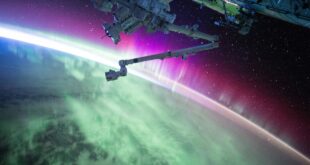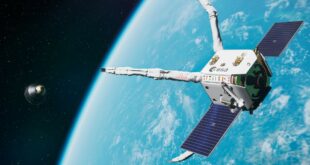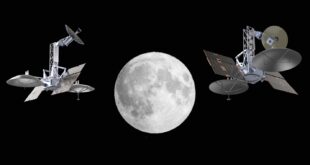
High Resolution from the Low Earth Orbit: Founded in 2014, the Bilbao/Spain-based Satlantis is a pioneer and frontrunner in Earth Observation today. SpaceWatch.Global’s Editor in Chief Markus Payer spoke with Satlantis CEO Juan Tomas Hernani about trends in the industry and technology, public and private funding, rideshare and the unprecedented growth of the small satellite sector.
“We are in a growth market”
Markus Payer: What are the fundamental technological shifts that shape and drive your business today?
Juan Tomas Hernani: It’s all about miniaturization. When you look at the relation between launch price, resolution and payload weight, you can see improvements by an order of magnitude. We are down to wholesale prices for earth observation images of 20 to 40 Euros per square kilometer covered, in resolutions lower than one meter. This causes huge disruptions. Let’s take an example. This month sees the launch of the Spanish SEOSAT-Ingenio satellite. It’s a camera of 150 kilos that delivers a 2.5 meter resolution. Satlantis’ camera flying today gives you 80 centimeters with 15 kilos. One tenth of the weight and three times the resolution. That makes a disruptive factor of 30. This is the miracle of miniaturization.
Is it miniaturization in optical hardware or also in electronics?
Miniaturization in electronics is key, absolutely. On the other hand, radiation is killing electronics in space. Radiation is the enemy of miniaturization because small chips are very vulnerable in space. That is why we have to use industrial chips and we have to specialize on the specific conditions we find in space.
How do you achieve technological breakthroughs? What knowledge do you need to innovate?
We don’t come from optics, lenses and optomechanics. We come from astrophysics. We are a group of scientists that has done different things in life. We have taken several years of efforts to translate proven technologies in astrophysics into what we call smart imaging today. Our image is no longer a photo, it’s data, a lot of data that we process and generate to produce pixels that are two and a half times smaller and more detailed. That is what we call the super resolution.
How important is the human eye for high resolution? Can it not all done by robots?
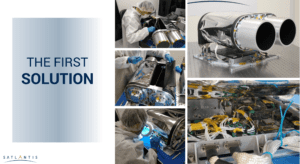
In a certain way, this is already today’s reality. Many people think that resolution is related to the human eye, and that is true, somehow. But then our images have to be processed. Take the example of picturing oil pits or detecting plant diseases in precision agriculture. The human eye cannot detect what is happening. We have to process our images, and the algorithms have to start to work. You need very powerful computers on board to do that, because you are handling raw data in the range of two gigabytes per second. There is a whole, complex technology matrix where, at the end, everything will be down to algorithms.
What hardware do you have in space today?
We have one camera in space today on the International Space Station in the JAXA module. We have sent another camera to the U.S. Air Force laboratories that is going to be installed also on the space station, but on the U.S. side. And then we have a third camera that will fly in a year’s time on a cubesat mission financed by the ESA and related to the oil and gas sector.
How important are small launchers and rideshare for you?
It’s hugely disruptive and changing the equation completely. SpaceX, for example, started to commercialize 200 kilogram smallsat packages at an incredible price. I think we will get these very good offers from intermediary companies that are marketing 200 kilo wholesale capacity in 30 to 80 kilo packages, for example. That certainly is a revolution, in terms of totally new long-term opportunities.
I haven’t seen that incredible SpaceX pricing for 200 kilos, what is it?
It’s 1 million U.S. dollars. Okay, I am not likely to buy these 200 kilos for a million dollars, it’s a net price, you will have to add what rideshare service providers do around it. But one thing is certain: this will cost me like five to six times less than the current market price.
How important is public funding for your projects, compared to private funding?
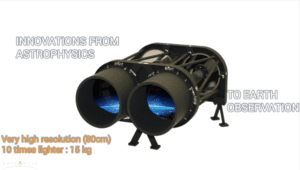
The big chunk is public, coming from governments, more and more complemented by new space venture capital. The private sector is not buying satellites, it is buying services, and we are convinced that our services will be extremely relevant for a lot of sectors. You can imagine, for example, that a car manufacturer would like to know the output of his competitors’ production plants. Or a retailer counts the numbers of cars on the other retailer’s parking lot. The thing is that the market has not yet arrived at this liquidity where those data can be reliably and sustainably produced so that the private sector joins. I think we still have a couple of years to go. Maybe oil & gas and agriculture are an exception. But otherwise, the public domain dominates, and we don’t expect that to change tomorrow.
What kind of constraints do you see coming with public funding? Are we not ushering in an era of complete freedom to observe whatever you want on our planet from space?
It’s interesting that we tend to think that there is total freedom in space, but public markets are never like that. Of course, you can look at Chinese or Russian or American infrastructures or Brazilian crops from space, that’s totally legal. But there are a lot of technology export rules to obey that protect a state’s sovereignty, security and industrial interests. But then, looking at space, there will also have to be regulations related to the environmental protection of space. If we have 2000 satellites operating in space today, and we move from 100 to 500 additional small satellite launches annually, we are going to double the park of satellites every two years. And when the traffic grows, we need to define which are the roads that we can use and for which purpose. Having no or low regulation is not sustainable when we move from 2000 to 20,000 satellites.
Where do you see Satlantis in four or five years from now?
Our target is to develop what we call a super payload. And that is a small camera that will arrive at a resolution down to 50 centimeters. It is all about scaling our technology. We want to be a leader in technologies that discover what the light wants to bring to us. It is a lot about environment and environmental protection. How do you control forest wildfires, greenhouse gas emissions, pollution and plastic in the oceans? Satlantis wants to be a leader in this by providing the sensing techniques and technologies. Our vision is to be 100 million company that will establish itself in several places on the globe and develop an open culture towards partners around the world.
What advice would you give young entrepreneurs and startups who want to invest and grow in the smallsat market?
The good news is that we are in a growth market. We are at a launch rate of 400 smallsats per year and will move to 500 next year and soon to 1000. Revenue-wise, smallsats are going to generate a higher accumulated revenue than the big satellites, so it is nice to take part in that swing. But there is a tweak in the numbers, and that is my second point. It’s like in this joke “How many soldiers are coming through the desert? 7007. I can only see seven. Well, seven at the front and 7000 hidden in the ditch.” The invisibles in our case are the thousands of satellites from SpaxeX and Amazon and the likes. The important lesson here is that you should select your specific area very carefully when you do not want to be crashed by one of the elephants already in the second of the five data highway lanes.
Thank you, Juan, for this interview, we wish you well.



